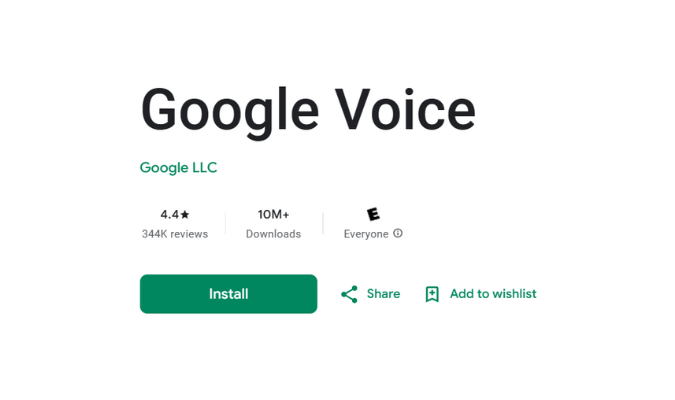Call centers are all about speed, but in the race to be as helpful and efficient as possible, many companies might be leaving themselves open to fraud and abuse.
The goal of call center fraud prevention is to create an environment in which authentic customers and callers can get the assistance they need—without providing openings for criminals and scammers to exploit for profit.
Ultimately, companies want security measures and checks in place not to hamper real customers, but to weed out the fake calls that are more likely to be the work of fraudulent actors. The not-so-simple trick is to find a delicate balance between being protocol-driven and solution-oriented.

That said, there are many steps you can take to create a more harmonious balance of security and assistance.
The Complete Call Center Prevention Checklist
A top-down overview of the main security measures to consider are as follows:
- Training to Recognize Fraud: Train your agents to spot social engineering tactics and fraud risks through regular coaching and fraud prevention programs.
- Verifying Caller Identity: Ask probing questions to callers about their account details to confirm their identities.
- Verifying Personally Identifiable Information (PII): Double-check sensitive account information such as account numbers and recent transaction information to verify caller identities before granting account access.
- Watching for Suspicious Caller Requests: Externally reconfirm unusual requests to avoid any unauthorized account alterations by fraudsters.
- Following Established Protocols: Follow standardized caller verification, documentation, and transaction practices to eliminate any lapses in security.
1. Train Representatives to Recognize Fraud
Call center representatives sit on the front lines when it comes to fraud prevention and detection. They have the extremely difficult task of providing helpful, expedient service while also remaining vigilant against deceitful callers.
Remember, it doesn’t matter if your call center is equipped with one of the best VoIP providers in the game—because without proper training, your representatives can be the vulnerabilities that criminals can exploit.
Many potential hackers use tactics like social engineering to target representatives to retrieve private customer or company data. For example, fraudsters may pose as IT staff looking to verify account information, managers looking to approve refunds, or even fellow employees looking for sensitive data regarding an urgent case.
In general, these tactics leverage urgency, familiarity, and authority to catch representatives off guard and skirt around established security protocols—which is why comprehensive and ongoing fraud training is so critical for call center staff.
An effective fraud prevention program can educate representatives on the latest schemes and teach them how to spot suspicious activity. However, with notoriously high turnover in call centers, it’s a big challenge to ensure proper anti-fraud education across teams, especially for new hires.
2. Ask Probing Questions to Verify Caller Identity
On the surface, asking questions might seem contrary to the call center’s objective of fast resolution, but incorporating a few strategic inquiries can be invaluable for ensuring your call center’s security. The key is understanding which questions to ask.
For example, callers expecting swift assistance typically falter when pressed for specifics about things like recent account transactions, previous service inquiries, and other purchase details. However, genuine customers can easily recall specifics because they personally completed the activities.
3. Verify Personally Identifiable Information (PII)
The backbone of any identity verification process is personally identifiable information (PII). Since many hackers have difficulties cracking VoIP security and encryptions, they resort to social engineering tactics to gather sensitive customer data.
Data like Social Security numbers, account numbers, physical addresses, and other sensitive details offer definitive proof of actual customers with legitimate needs. As a part of your security protocols, you should train representatives to verify multiple PII data points before escalating assistance on any customer accounts.
For example, callers claiming to need account access due to lost logins should first be asked to confirm information that is already tied to their customer profile. Representatives can (and should) double-check details such as the following:
- Account numbers
- Recent transactions
- Registered addresses
- The last four digits of Social Security numbers
- Similar verifiable tidbits of customer info
Genuine customers can provide this information fairly easily, while hackers and bad actors will reveal themselves or drop off the call entirely.
4. Carefully Confirm Suspicious Caller Requests
Many of the best call center services prioritize speed and efficiency—but speed cannot (and should not) compromise security when trying to prevent breaches. If your representatives find themselves fielding unusual requests like payment redirects, shipping address changes, or requests to add additional users to existing customer accounts, they should immediately follow their security protocols before complying with the request.
For example, potential fraudsters may pretend that the account holder has recently moved and request to update the billing contact accordingly. Without proper due diligence, these seemingly innocuous ploys can give up a user’s account. In other words, unusual customer requests warrant additional validation every single time.
5. Follow Established Protocols, Always.
On the surface, granting your representatives a lot of flexibility in their call handling can be helpful for providing quality customer service, but if it leads to failures in adherence to security protocols, that can open up dangerous opportunities for criminals to exploit lapses in an individual agent’s judgment.
As such, the best defense ultimately relies on your representatives being able to follow established security policies without making exceptions.
For example, fielding a seemingly legitimate request to change an account address without reconfirming the caller’s account details could result in a hacker enabling future billing redirects on an existing user account. Avoiding this means your representatives must follow rigid validation procedures as second nature.
Make no mistake—skilled fraudsters aim to charm rather than threaten. Be sure that your representatives understand the potential risks of these security breaches and ensure that they always follow security protocols.
The Bottom Line: Securing Your Call Center
Securing your call center is undoubtedly challenging, but applying the best practices will ensure that your representatives are equipped to keep your customer accounts secure.




